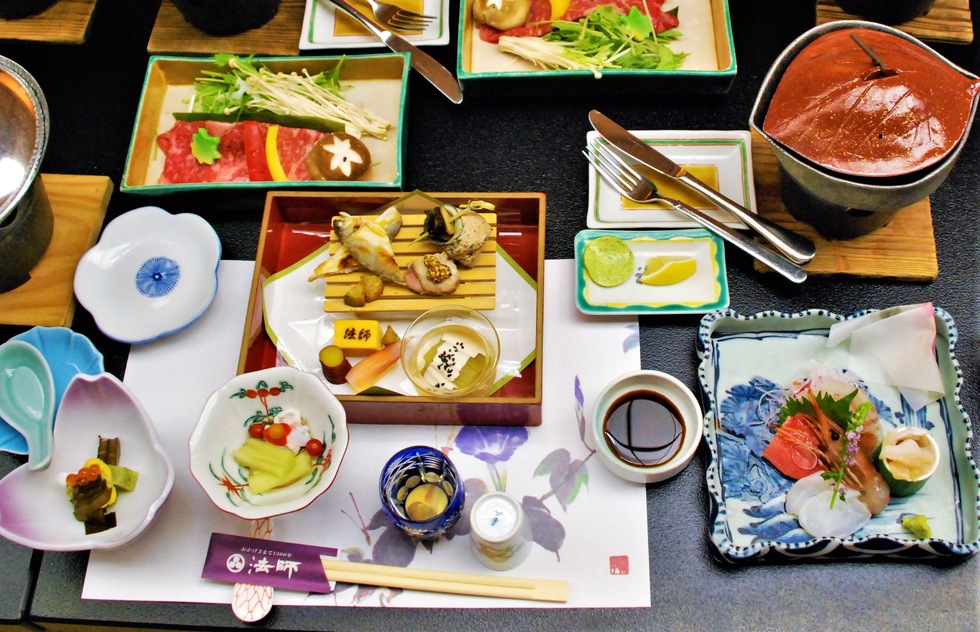Tips for eating Japanese foods at home
There are many reasons to go out for Japanese food. It’s delicious, it’s healthy, it’s affordable, it’s satisfying, and it’s a great way to get to know the culture of Japan.
But it’s also one of the most misunderstood cuisines in the world. If you’ve ever had any experience with Japanese food, chances are that either you or your family member have complained about how spicy it is. Or maybe you don’t like its mushy texture. Maybe you think it takes too long to prepare. These are just some of the common misconceptions surrounding this cuisine.
But if you know where to look, there are lots of ways that Japanese food can be enjoyed, and none of them involve a lot of effort on your part. Here are several tips for eating Japanese foods at home on this website.
Japanese Food Basics
To understand why the Japanese eat the way they do, we first need to understand what they actually put into their mouths. There are three major components of Japanese food: rice, fish/meat, and vegetables/fruits. Together these three elements form an essential foundation for Japanese meals. Without each of them, the other two will not work. Rice is the main ingredient in traditional Japanese dishes, while both fish and meat are considered an important source of protein. Vegetables and fruit provide vitamins, minerals, and fiber — all things that help build a strong body.
The basic principles of cooking Japanese food include using only the freshest ingredients possible, taking care when handling raw materials (e.g., avoiding touching cooked food with bare hands), and following precise cooking instructions. The recipes below will show you how to make the best use of all three of these fundamental ingredients.

Rice is the cornerstone of traditional Japanese food. In fact, the word “Japanese” literally means “the land of rice.” This is because rice was the primary staple food of the Japanese people throughout much of history. Today, rice remains an important part of the diet for over 90 percent of the population.
Rice has been cultivated for thousands of years on the islands of Honshu and Kyushu, but it wasn’t until the seventh century that rice cultivation spread across the country. At first farmers grew rice by hand, but as the technology improved during the Edo period (1603-1868), they began harvesting rice with large, water-powered machines. By the late 19th century, rice became so abundant that the government established a system to control the crop.
Today, Japan grows more than half of the rice consumed worldwide. Although farmers still rely primarily on water power, today’s rice farming methods are sophisticated. For example, rice plants are genetically modified to produce bigger grains, which improves yields. And rice is also grown hydroponically in specialized greenhouses to ensure maximum quality.
Fish is another key component of Japanese food. As mentioned above, fish is a crucial source of protein for nearly everyone living in Japan. However, not every type of fish is appropriate for consumption. Many different types of fish are available, and there are even laws regulating which species are considered edible. Some common varieties include eel, salmon, tuna, sardine, and mackerel. But don’t worry; you won’t need to learn the specific names of all of these fishes! Instead, just keep this list handy and refer to it whenever you want to eat something from the sea.
As you can see, fish comes in many different forms. Freshwater fish are most commonly eaten whole, while saltwater fish are often used in sushi rolls. Fish fillets are generally served deep fried, steamed, grilled, poached, or boiled. You can find fresh fish in markets near the docks, while frozen and canned seafood are widely available in supermarkets.
Vegetables and fruits are usually served raw, though they can sometimes be prepared by roasting, frying, boiling, grilling, or sautéing. Most common Japanese vegetables include turnips, radishes, cucumbers, spinach, carrots, and onion. Fruits include apples, oranges, pears, plums, peaches, grapes, persimmons, kiwi, melons, and strawberries. When choosing fresh fruits and vegetables, remember that you should always wash them well before eating.
Most Japanese restaurants offer multiple courses, and that’s because the meal isn’t complete without rice, fish, and vegetables. But there are plenty of dishes that are good enough on their own. Let’s take a look at some of those.
Katsudon
This dish consists of pork cutlet simmered in broth and served with rice. Pork is a popular choice for Japanese diners because it contains high amounts of selenium, which helps prevent cancer. Katsudon is traditionally served with miso soup, and it gets its name from the sound of the slurping noise made by eating it. In modern times, however, it is often served with ramen noodles instead.
Shabu Shabu
Shabu shabu is basically beef or chicken boiled in hot pot. A serving typically includes beef steak sliced thin, and it’s often accompanied by vegetables such as cabbage and onions. The term “shabu” refers to the cooking technique, and “shabu-ka” is a slang word meaning “to cook quickly.”

Okonomiyaki
Okonomiyaki is a savory pancake made from flour, eggs, vegetables, and seaweed. Traditionally, okonomiyaki is stuffed with octopus, but you can also fill it with ground pork, squid, or anything else you can imagine. Okonomiyaki is a popular snack in Japan, and it’s traditionally served with a dipping sauce called takoyaki.
Ramen Noodles
These thick wheat flour noodles come in various flavors, including pork, chicken, vegetable, seafood, and mushroom. They are often topped with egg, soy sauce, and scallions, and they are usually eaten with a side of pickled ginger and mustard greens.
Japanese Restaurant Tips
When you go out to eat, it’s important to follow certain procedures to avoid disappointment. First, always check the menu carefully before making a reservation. Pay attention to the prices listed, and choose items that appeal to you. Don’t hesitate to ask questions, since many Japanese restaurants cater to tourists looking for specialties that aren’t offered anywhere back home. Second, consider ordering something light and easy to digest. Remember, you’ll be eating later anyway, so you may as well enjoy yourself now.
Finally, bring a camera. Not only will you be able to take pictures of your favorite dishes, but you’ll be able to snap photos of the ambiance and the staff. That way, when you return home, you’ll be able to reminisce about the time you ate at a local Japanese restaurant.


